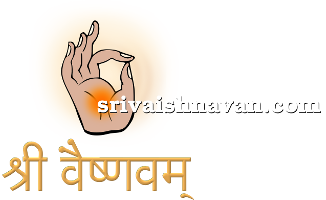What is an authority (Pramana)?
An authority is something from which we learn truths. We consider the Vedas, as the basic authority
We also use logic and arguments to arrive at the truths, in addition to learning from the Vedas.
Such things from which we learn the truths or arrive at the truths, are called authority (pramana).
What are the authorities or sources (pramana) for understanding things?
These are three in number, and are as follows:-
- What we understand directly by our senses, like what we see with our eyes or what we hear with our ears. This is called Pratyaksha.
- Inference or logic (Anumana) – That is, by seeing or understanding a thing, we logically infer something else, although it is not actually seen by us. For example, if we see smoke coming, we infer there is fire. So this is called one of the sources of knowledge (anumana).
- Sabda (or sound). We accept the Vedas, Smritis, Itihasas, Puranas as authority (So long as they do not contradict the Vedas).
It is from these that generally the various systems of philosophy are developed by logical deductions and arguments.
Can you describe this further?
A detailed description or discussion of these will be difficult to understand. I will only briefly indicate the nature of each of these.
Talking of the first source, i.e. perception by senses, we have to be careful that our perception is correct and it is not wrong. For example, seeing is correct and it is not wrong. For example, seeing a rope from a distance, we may mistake it for a serpent. This is wrong perception. Similarly, in hot summer, on a tar road, seeing from a distance, you may think that there is water. This again is wrong perception. We have to guard against such wrong perceptions.
In talking of perception by senses, what are the senses?
The senses or Indriyas are of two kinds: the senses of knowledge (Jnana Indriyas) and the senses of Action (Karma Indriyas).
What are the senses of knowledge (Jnana Indriyas)?
These are five in number:
- Eye
- Ear
- Nose
- Mouth
- Skin (on the body)
What are the second set of senses or Indriyas?
These are called the five senses of action or Karma (Karma Indriyas)
What are they?
These are:
- Tongue
- Hand
- Leg
- Anus
- The reproduction organ.
So, we have to be careful that what is understood through the senses of knowledge is correct.
We should also remember at a later time what we had seen or heard earlier. This is also accepted as an authority, since it is only remembering of an authority, which was understood through our senses earlier.
What is an illusion or maya?
We see a rope and wrongly think it is a serpent. We see a shell and wrongly think it is silver.
This is called illusion.
What exactly is Sabda?
As you know, Sabda means sound. Sound evolves or develops into words, and then sentences.
The Vedas are accpted as the basic authority. Along with this, we also accept the Brahma Sutra And Bhagavad Gita as authorities.
We also accept the Itihasas (Ramayana and Mahabharata), the Purana, the Smritis and the Vaishnava Agamas as authorities.
However, there is one improtant condition and that is, that anything in these works, which are
Not in tune with the Vedas or which are conrtradictory to Vedas, are not accepted as authority.
What is the ultimate aim or abjective of the human being?
The ultimate aim or objective of the human being is to attain salvation or moksha.
What is salvation or moksha?
We human beings are repeatedly born, come into this world and then die. Thus, there is a cycle of births and deaths. In this life, we commit so many sins, we undergo so many hardships. We
do not follow the code of conduct prescibed by Sastras and we go on committing sins.
Salvation means, release from this cycle of births and deaths and attainment of moksha or mukti
What are the things we should know to achieve salvation in due course?
We have to learn five things (Arth Panchaka) and these are as follows:
- The object of attainment is Sriman Narayana, who is permanently associated with Lakshmi. So, the nature of God.
- The nature of our Soul or Jivatma
- The means or the methods to be adopted by us, for attaining Moksha at the end of this life.
- The exact nature of Moksha or Parmapada.
- The hindrances that arise in attaining our goal of Moksha at the end of this life; and how to get over these hindrances or difficulties.
What exactly is Tattva?How many tattvas are there?
“Tattva” means that which is real. There are three tattvas or reals. These are:
- Jivatma. It is also called as Chit, Soul, Self, Atma and Chetana. It is sentient i.e., has Knowledge.
- Achetana or matter or achit. It is non-sentient. i.e., dose not have knowledge.
- Iswara or the Supreme Lord.
What is the most important principle or doctrine of our sampradaya?
A. The most important principle (pradhana pratitantra) is the body/soul relationship (sarirasariri
Bhava or sarira – atma bhava) between sentient (Chetana), non-sentient (achetana); and Iswara.
The Brahman or Iswara is the soul and the other two reals (tattvas), chetana and achetana, form His body.
Please explain this further. How do you define a body?
You can say that the body has legs and hands. The body of a serpent does not have any hands.
Similarly, the shape and size of one body are different from that of another. A tree has a
different body. An animal has a different body from that of a bird. The body of an elephant is
different from the body of a mosquito. So, you cannot give physical characteristics to define a body.
There are three characteristics which decide what the body is
What are these characteristics?
The first one is that the body is supported by the soul. The body exists from the time of the soul
entering into it, in the mother’s womb. The bodycontinues and perishes or dies, only when the soul
leaves the body. In other words, the body is supported by the soul. As long as the soul remains in the body, the soul
supports the body.
This is the first characteristic of the body. Even in a state of dreamless sleep, the
body continues to exist. So, the soul fully supports the body.
What is the second characteristic?
The second characteristic is that the Soul also
controls or rules over the body. When the body is awake, the body is controlled by the will of the soul. The soul thus rules or controls the body. The body acts as per the will of the soul.
What is the third one?
The third one is that the body exists only for the
fulfilment of the desire of the soul. The soul, through the mind, desires something and then the
body acts accordingly. So, the body exists only for the purpose of the soul.
These three govern the relationship between the body and the soul.
So, what is the significance of body/soul relationship?
The soul performs the following three functions,over the body:
- Supporting (adharatva)
- Controlling (niyantrutva)
- Mastership (Seshitva).
So, the soul is, in relation to the body, as follows:
- Supporter (adhara)
- Controller (niyanta)
- Master (Seshi).
So, the body is
- being supported by the soul; (adheyatva)
- being controlled by the soul; (niyamyatva)
- existing for the pleasure of the soul (seshatva).
Can the above three qualifications be taken to define the body/soul relationship?
Yes.
How do you then conclude that by logic, Brahman or Iswara is the soul of all chetana and achetana?
You take all the three factors, which has have mentioned above and apply the principle to
Brahman versus the chetana and achetana:
- All these chetana and achetana are supported by Brahman.
- Secondly, in their waking state, they are controlled or ruled by Iswara.
- Thirdly, all these exist only for His pleasure.
Thus, all the three characteristics or factors which determine the relationship between the soul and
the body, are present in the case of Brahman or Iswara versus the entire chetana and achetana.
Hence the fundamental doctrine of our philosophy is that Iswara is the soul of all chetanas or
Jivatmas. Iswara is also the soul of all achetana i.e.the fundamental Matter and its evolutions.
In other words, all the Jivatmas are the body of Iswara. Similarly, Matter and its evolutions also
are the body of Iswara. This is the basic doctrine of our religion and philosophy.
Can you prove the Sarira – Sariri bhava by quoting from the Vedas?
We have a full section called “Antaryami Brahmana” in the Brihadaranyaka Upanishad and
also similar passages in the Subala Upanishad. These specifically and clearly say that Iswara is the
soul and the Jivatma and Matter are His body.
The following are some of the passages:-
- He is dwelling in the earth, is within the earth.
- His body is the earth
- His body is the water
- His body is the fire
- His body is the air
- His body is the sun
- His body is the moon and the stars
- His body is ether
- His body is the light
- His body is speech
- His body is the eye
- His body is the ear
- His body is the mind
- His body is the skin
- His body is the soul or Jivatma
- His body is the intellect
- His body is matter
- His body is death
- He is the internal soul of all beings
- He is the divine Lord Narayana. He is the soul of all.
So, am I correct in saying that the fundamental basis for our philosophy is the body/soul relationship?
Yes, We have established body/soul relationship between the Paramatma and Jivatma/achetana in two ways:
- By logic and argument, we have said that Brahman supports and controls the Jivatma/achetana and it is for His purpose that the Jivatma/achetana is there. So, the Jivatma/achetana is the body and Brahman is the soul.
- Secondly, we have also quoted several passages from the Vedas, which clearly and explicitly state that Brahman is the soul; and the Jivatma, the matter and other evolutions are all His body.
You say that Ramanuja perfected our system of philosophy and body/soul relationship. Then were there earlier acharyas who propounded this?
Yes. There were earlier acharyas like Bodhayana,
Dramida and Tanka. But unfortunately their works have been lost and are not available now.
Have the Alwars mentioned about the body/soul relationship?
To be answered.

